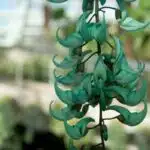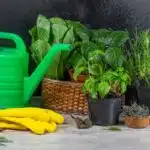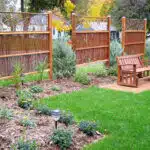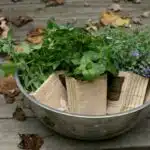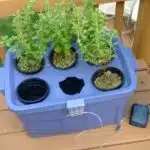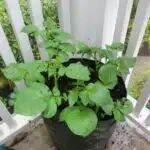Herb gardening is a rewarding and beneficial hobby that has been practiced for centuries. Not only does it provide fresh ingredients for cooking and medicinal purposes, but it also adds aesthetic value to any outdoor space. While most herbs are planted as groundcover or in pots, some herbs can be grown as climbing vines which adds an extra layer of beauty to your garden. In this article, we will discuss four herbs that can grow as climbing vines and how you can incorporate them into your herb garden.
Climbing herbs add vertical dimension to your garden and can be used to create a natural barrier or privacy screen around outdoor living spaces. They also make excellent companions for other plants such as roses, clematis, or even vegetables like tomatoes. Climbing herbs are easy to care for and require minimal maintenance once established. With the right support structure and growing conditions, these herbs can reach impressive heights while providing you with a bountiful harvest of fresh herbs throughout the growing season. Let’s explore the possibilities of growing climbing herbs in your garden.
Benefits Of Growing Climbing Herbs
As gardeners, we are like the vines we cultivate – constantly reaching for new heights and striving to grow in any way possible. Container gardening and vertical farming have given us even more opportunities to explore our climbing tendencies by utilizing space in a unique way. Growing herbs as climbing vines has become a popular trend amongst herb enthusiasts, and for good reason.
One of the main benefits of growing climbing herbs is their ability to maximize space. As opposed to traditional gardening methods where plants take up valuable real estate on the ground, vertical gardening allows you to utilize every inch of your available space. With the use of trellises or other support structures, climbing herbs can be trained to grow upwards instead of outwards, leaving more room for other herbs or vegetables.
Another advantage of growing climbing herbs is their versatility. As they grow upwards, they can adapt to a variety of support structures, from simple stake poles to elaborate pergolas. This allows gardeners with different preferences and spaces to tailor their herb gardens to their liking. Whether you live in an urban apartment with limited balcony space or have acres of land at your disposal, there is a support structure that can fit your needs.
Climbing herbs also add an aesthetic appeal that cannot be matched by ground-growing plants alone. They create a beautiful visual display as they weave and wind around their supports, creating an intricate tapestry that adds dimension and interest to any garden space. Not only do they serve as functional additions to your herb garden by maximizing space, but they also elevate its beauty with their graceful presence.
With so many benefits associated with growing climbing herbs, it’s easy to see why this trend has taken off in recent years. However, choosing the right support structure is crucial in ensuring your plants thrive and reach their full potential. Let’s explore some options for support structures that will help bring your herbal vine dreams into reality!
Choosing The Right Support Structure
When choosing the right support structure for herbs that can grow as climbing vines, strength, stability, and durability are key considerations. Depending on the height and weight of the vine, the structure chosen should be able to support it without the risk of collapsing. The material used should also be able to withstand weather exposure and offer adequate sun protection. Different soil types may require different support structures, and pruning may be necessary for some herbs. Flexibility and cost are also factors to consider, as is the maintenance and aesthetics of the chosen structure. Finally, safety should be ensured for the user of the support structure.
Strength
When it comes to growing herbs that can climb, choosing the right support structure is crucial for their growth and health. One important factor to consider is the strength of the support structure. Weak structures can lead to damage or even death of the plant, while strong ones can provide a sturdy foundation for the vine to grow and thrive.
There are several ways to improve the strength of your support structure. Firstly, choose materials that are strong and durable, such as steel or thick wooden poles. Secondly, ensure that your support structure has a solid foundation by burying it deep in the ground or securing it with concrete. Finally, consider using cross-bracing techniques to further strengthen your structure.
In addition to building a strong support structure, there are exercises that you can do to improve your own physical strength for herb gardening tasks. Strengthening exercises such as squats and lunges can help you carry heavy bags of soil or move large pots without straining your back muscles. Yoga poses like downward dog and plank pose can also help you build core strength which is essential for maintaining good posture while working in the garden. By incorporating these exercises into your routine, you will be able to better care for your climbing herbs and enjoy a more fulfilling gardening experience.
Stability
Choosing the right support structure for climbing herbs is a crucial aspect of herb gardening. In addition to strength, stability is also an important factor to consider when building your support structure. A stable support structure prevents damage to your plants and ensures that they grow healthy and strong.
Improving stability can be achieved by choosing materials that are sturdy and durable. Steel or thick wooden poles are excellent options for building a stable support structure. Additionally, securing your support structure with concrete or burying it deep in the ground will provide a solid foundation for your climbing herbs.
Preventing damage to your climbing herbs is essential for their growth and overall health. Cross-bracing techniques can also be used to further strengthen your support structure and prevent any wobbling or shaking. By following these guidelines, you can ensure that your climbing herbs have a stable support system that allows them to grow and thrive without any risk of damage.
Durability
Choosing the right support structure for your climbing herbs is a critical component of successful vertical gardening. Not only does it provide the necessary support for your plants, but it also ensures that they grow healthy and strong. Stability and strength are essential factors to consider when selecting materials for your support structure. However, durability is also crucial in this process.
Durability plays a pivotal role in the longevity of your support structure. As a herb gardener, you want to ensure that your investment lasts as long as possible. Choosing durable materials such as steel or thick wooden poles will not only provide stability but also withstand harsh weather conditions. Durable materials can increase plant resilience by protecting them from damage caused by wind, rain or heavy snowfall.
In conclusion, choosing durable materials for your support structure is fundamental in ensuring that your climbing herbs thrive without any risk of damage. By considering durability alongside strength and stability, you can create a successful vertical gardening system that will last through different seasons and keep providing fresh herbs for years to come. Remember that investing in a durable support structure is an investment in the future health and growth of your climbing herbs!
Soil And Watering Needs
Choosing the right support structure is crucial in ensuring that your climbing herbs thrive. But what about choosing the right herbs to grow as climbers? There are many options available, but some stand out more than others. In this section, we will discuss some of the best climbing herbs you can grow and how to care for them.
Indoor vs outdoor: When it comes to growing climbing herbs, you have two options: indoor or outdoor. Indoor climbing herbs like ivy and pothos can add a touch of greenery to your home while also purifying the air. Outdoor climbing herbs like hops and wisteria can create a stunning visual display while also providing delicious flavors for your meals.
Organic vs non-organic: Another decision you need to make when growing climbing herbs is whether to use organic or non-organic methods. Organic gardening uses natural methods like composting and crop rotation to enrich soil and prevent pests. Non-organic gardening relies on synthetic fertilizers and pesticides to manage plant growth. While both methods have their advantages, organic gardening tends to be more sustainable in the long run.
Now that we’ve discussed some of the basics of growing climbing herbs, let’s move on to sunlight and temperature requirements. These factors are critical in ensuring that your plants receive optimal growing conditions and produce healthy yields.
Sunlight And Temperature Requirements
The success of growing climbing herbs depends on the right growing conditions. These plants require sunlight and temperature requirements that vary depending on their species. Understanding the ideal conditions for each type of herb is crucial in maintaining their health and promoting growth.
To ensure optimal growth, it is important to provide sufficient sunlight for your climbing herbs. Most varieties need at least six hours of direct sunlight per day to thrive. However, some species can tolerate partial shade, making them ideal for balconies or indoor gardens. It is also important to note that excessive heat can cause damage to these plants, so make sure they are not exposed to extreme temperatures.
In addition to understanding the specific sunlight and temperature needs of your climbing herbs, maintaining proper care and maintenance is essential for their growth. Here are a few tips to keep in mind:
- Water your herbs regularly but avoid overwatering.
- Use well-draining soil with good organic matter.
- Fertilize your plants every two weeks with a balanced fertilizer.
- Keep an eye out for pests and treat them immediately if detected.
By following these simple maintenance tips, you can ensure that your climbing herbs grow healthy and strong. In the next section, we will delve into training and pruning techniques that are crucial in shaping the appearance and promoting productive growth of these plants.
Training And Pruning Techniques
Pruning and training techniques are essential practices in growing climbing herbs. These methods help maintain the shape and structure of the plant, promote healthy growth, and improve fruiting or flowering. There are different types of pruning that gardeners can apply to their climbing vines, depending on the plant’s growth habit and purpose.
The first type of pruning is called maintenance pruning, which involves removing dead, diseased, or damaged parts of the plant regularly. This practice helps prevent pests and diseases from spreading and allows air circulation within the canopy. Another type of pruning is called rejuvenation pruning, which aims to stimulate new growth by cutting back old stems or branches. This technique is useful for woody climbers like wisteria or honeysuckle that tend to become leggy or overgrown.
Aside from pruning, training techniques also play a vital role in shaping climbing herbs. The most common method is using trellises or supports to guide the plant’s direction of growth. Gardeners can also use tying materials such as twine or wire to secure the stem or branch onto the support system. Some climbers like grapes or passionfruit require specific training systems like espaliers or cordons to maximize yield and ease of harvest.
As with any gardening practice, it’s important to understand the unique needs of each herb species before applying any pruning or training techniques. Proper timing and technique can make a significant difference in achieving a bountiful harvest of fresh herbs for culinary, medicinal, or ornamental purposes. In the next section, we will discuss some tips on how to harvest and store climbing herbs properly for long-term use.
Harvesting And Storage Tips
After successfully harvesting your climbing vines, it is important to store them properly to ensure that they retain their freshness and potency. One effective storing technique is to dry the herbs in a well-ventilated area away from direct sunlight. This can be achieved by hanging the herbs upside down using a string or clothespin. Once dried, you can store the herbs in an airtight container such as a glass jar or a plastic zipper bag.
Shelf life management is crucial when storing climbing vine herbs. Different herbs have varying shelf lives, and it is important to take note of this to avoid wasting them. Generally, dried herbs can last up to two years if stored properly. It is also advisable to label your containers with the date of harvest and the expiration date. Proper labeling will help you keep track of your herb collection and prevent you from using expired ones.
Storing your climbing vine herbs properly will extend their shelf life and preserve their quality. By following the techniques mentioned above, you can ensure that your herb collection remains fresh for future use. In the next section, we will delve into another popular climbing vine herb – thyme – and explore its unique characteristics and uses in herb gardening.
Thyme As A Climbing Vine
- Thyme is an herb that is suitable for growing as a climbing vine, with many varieties becoming available to gardeners.
- When planting thyme, it is best to use soil that is well-draining and rich in organic matter, and to space the plants at least 8 to 10 inches apart.
- To encourage the thyme to grow into a climbing vine, choose a trellis or other support structure and tie the stems to it as they grow.
- Pruning of thyme should be done regularly, ideally in early summer, to keep the stems from becoming too long and leggy.
- Training the thyme to a trellis can be done by tying the stems in a zig-zag pattern, which will help to create the desired shape.
- Finally, ensure that the thyme is kept adequately watered and fertilized to encourage healthy growth and an abundance of flowers.
Thyme Varieties
Thyme is a popular herb that can grow as a climbing vine, making it an excellent choice for gardeners who want to add some vertical interest to their herb gardens. There are numerous thyme varieties available, each with its unique flavor and growth habit. The most common thyme varieties include lemon thyme, creeping thyme, and silver thyme.
Thyme preservation is essential for gardeners who want to enjoy the herb’s flavor year-round. One of the best ways to preserve thyme is by drying it. To dry thyme, harvest the stems when the plant is in full bloom and hang them upside down in a warm, dry place. Once the leaves are completely dry, crumble them into a jar and store them in a cool, dark place.
Thyme propagation techniques vary depending on the variety of thyme you are growing. For most thyme varieties, propagation can be achieved through stem cuttings or division. To propagate your thyme plant through stem cuttings, take a 4-inch cutting from a healthy stem and remove all but the top few leaves. Dip the end of the cutting in rooting hormone and plant it in well-draining soil. Keep the soil moist until roots form and then transplant the new plant into its permanent location.
Planting And Care
Thyme’s versatility as an herb extends beyond its various flavors and growth habits. It can also be cultivated as a climbing vine, adding a unique dimension to herb gardens. Thyme’s natural inclination to climb makes it ideal for container gardening, where it can grow vertically on trellises or stakes. When planting thyme in containers, ensure that the soil is well-draining, and the container has adequate drainage holes. Thyme prefers full sun but can tolerate partial shade. Regular watering is necessary for optimal growth, but overwatering should be avoided to prevent root rot.
Like other herbs, thyme requires proper care to thrive and remain healthy. Pests such as spider mites, aphids, and whiteflies may attack thyme plants. Regular inspection of the plant can help detect any pest infestations early enough before significant damage occurs. Natural pest control methods such as spraying neem oil or insecticidal soap on affected plants may help manage these pests effectively without harming beneficial insects such as bees and butterflies. Pruning your thyme plant regularly helps maintain its shape and encourages bushy growth while preventing the plant from becoming leggy.
In conclusion, planting and caring for thyme as a climbing vine requires some knowledge of its specific requirements. Proper container gardening techniques combined with regular pruning and pest control measures are essential for maintaining a healthy plant that adds a unique vertical dimension to your herb garden while providing delicious flavor options year-round.
Pruning And Training
Pruning is a crucial aspect of maintaining the health and shape of thyme plants cultivated as climbing vines. Regular pruning encourages bushy growth, prevents legginess, and ensures that the plant remains within its designated growing area. Tools such as pruning shears or scissors are essential for this task. When pruning thyme, ensure that you remove only about one-third of the plant’s foliage to avoid stressing it.
Training methods also play a vital role in shaping thyme plants grown as climbing vines. These methods involve guiding the plant’s growth along a trellis or stake to prevent it from sprawling across other plants or areas. The most common training method for thyme is tying the plant’s stems loosely to a support structure using twine or clips. This technique helps keep the plant vertical while allowing it to grow naturally. Thyme can also be trained into various shapes, such as spirals or pyramids, for aesthetic purposes.
When pruning and training your thyme plant as a climbing vine, it’s essential to consider its specific growth habits and requirements. Regularly inspecting the plant for pest infestations and providing adequate water and nutrients are also critical components of proper care. By following these guidelines and utilizing appropriate tools for pruning and training, you can ensure that your thyme plant remains healthy, vibrant, and adds an attractive vertical dimension to your herb garden.
Climbing Nasturtiums For Edible Flowers
Climbing nasturtiums are a beautiful and tasty addition to any herb garden. These vibrant flowers can be grown as both an ornamental plant and as an edible crop. Nasturtiums are easy to grow and care for, making them a great choice for beginners.
Growing techniques for climbing nasturtiums involve providing ample support for the vines to climb. Trellises or stakes can be used to guide the plants upward. Nasturtiums prefer well-draining soil and plenty of sunlight, but they can tolerate some shade. Regular watering is also necessary to keep the plants healthy.
In culinary uses, nasturtium flowers and leaves have a peppery taste that adds flavor and color to salads, sandwiches, and other dishes. The flowers can also be stuffed with cheese or other fillings for a unique appetizer. Additionally, nasturtium seeds can be pickled in vinegar and used as a substitute for capers.
Transition into subsequent section about growing sweet peas as a climbing herb: As with climbing nasturtiums, sweet peas make great additions to any herb garden due to their ability to grow as vines. Let’s take a closer look at how these fragrant herbs can be grown and utilized in culinary applications.
Growing Sweet Peas As A Climbing Herb
Climbing nasturtiums are a great addition to any garden. They offer beautiful edible flowers that can be used to add color and flavor to salads and other dishes. However, if you are looking for more variety in your climbing herbs, consider growing sweet peas.
Sweet peas come in a variety of colors and sizes, making them a versatile addition to any garden. Some popular sweet pea varieties include the Spencer series, which offers large flowers with ruffled petals, and the Old Spice series, which has a strong fragrance. When growing sweet peas as climbing herbs, it is important to choose a vertical garden design that will allow them to climb easily.
One option for vertical garden design is to use trellises or stakes. Another option is to plant sweet peas near fences or walls where they can climb naturally. Whichever method you choose, make sure that your sweet pea plants receive plenty of sunlight and water. With proper care, they will reward you with beautiful blooms throughout the growing season.
Using Climbing Hyacinth Bean For Ornamental Purposes
Climbing Hyacinth Bean, also known as Lablab purpureus, is a popular ornamental plant due to its vibrant purple flowers and attractive foliage. However, not many people know that this climbing vine is also edible and can be used in various cooking recipes. The beans of the Climbing Hyacinth Bean are rich in protein and fiber, making them perfect for vegetarian diets.
Propagation of the Climbing Hyacinth Bean can be done through seeds or cuttings. Seeds should be soaked in water for at least 24 hours before planting to ensure better germination rates. Cuttings should be taken from mature plants during the spring season when new growth is emerging. Once rooted, these cuttings can be transplanted into larger pots or directly into the garden.
If you’re planning to use Climbing Hyacinth Beans for cooking purposes, it’s essential to note that they need to be cooked thoroughly before consumption. The beans contain cyanogenic glycosides that can release toxic cyanide if not adequately prepared. Boiling the beans for at least 30 minutes or pressure-cooking them can help remove any toxins and make them safe to eat.
- Cooking Uses:
- Use Climbing Hyacinth Beans in stir-fries or curries.
- Mash boiled beans with garlic and herbs to make a flavorful spread.
- Add cooked beans to salads for an extra protein boost.
Overall, Climbing Hyacinth Bean is an excellent choice for anyone looking for an ornamental plant that also has culinary uses. With proper preparation techniques and care, this climbing vine can bring a beautiful touch to your garden while adding nutrition to your meals.
Conclusion
Growing herbs is a great way to add flavor and beauty to your garden space. Climbing herbs in particular can bring a unique element of vertical interest, while also providing practical benefits such as edible flowers, fragrant leaves, and ornamental appeal. When selecting climbing herb varieties, it’s important to consider factors such as support structures, soil and watering needs, sunlight and temperature requirements, as well as training and pruning techniques.
Thyme is a popular culinary herb that can also be grown as a climbing vine. With its fragrant leaves and delicate pink or purple flowers, thyme adds both aesthetic appeal and savory flavor to any meal. The creeping stems of thyme can be trained to climb up trellises or walls for a beautiful display in your garden.
Climbing nasturtiums are another versatile herb that can be grown for their edible flowers. These bright blooms come in shades of yellow, orange, red, and pink, adding cheerful color to salads or other dishes. Nasturtiums are also easy to grow from seed and can be trained to climb up fences or other support structures for a stunning vertical display.
Sweet peas are another popular choice for climbing herbs. With their delicate butterfly-shaped petals in shades of white, pink, blue, and purple, sweet peas add an elegant touch to any garden setting. These fragrant blooms can be trained to climb up trellises or other vertical supports for a beautiful display throughout the summer months.
Finally, climbing hyacinth bean is an ornamental herb that adds both beauty and function to any garden space. With its striking purple flowers and twisting tendrils that cling tightly to supports structures such as trellises or arbors this plant provides shade while being pleasing on the eyes.
In conclusion; climbing herbs offer unique advantages when it comes to gardening- they provide visual interest in addition flavoring meals with edible flowers while increasing the surface area of greenery available in a small space. By selecting the right support structures, soil and watering needs, sunlight and temperature requirements, as well as training and pruning techniques- growing climbing herbs like thyme or nasturtiums can be a rewarding experience for both beginner or expert gardeners alike. So why not add these beautiful herbs to your garden this season, and enjoy the benefits they bring?
Image Credits
- “Climbing Vines Wallpapers in Ripe Persimmon by BackgroundsEtc” by webtreats (featured)










![How To Grow And Care For Corkscrew Vine 14 Strophanthus preussii [Corkscrew Flower, Poison Arrow Vine, Spider Tresses, Tassel Vine] Apocynaceae](https://green-life.blog/wp-content/uploads/2023/04/KW5aFOG5S3jq-150x150.jpg.webp)

